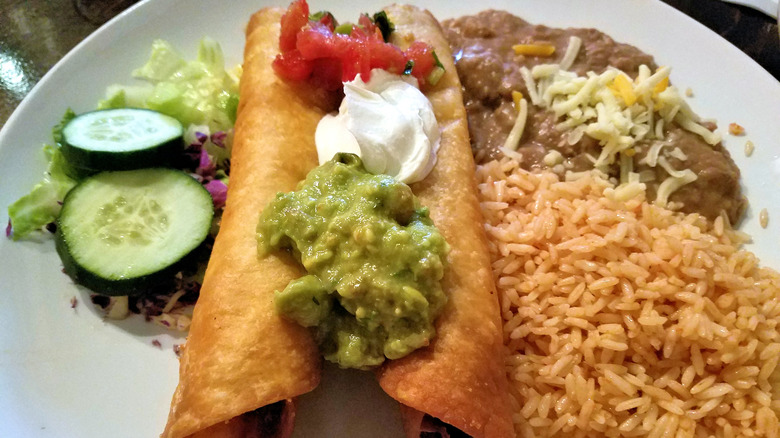What's The Difference Between Flautas And Taquitos?
At first glance, there doesn't appear to be any real distinction between flautas and taquitos — generally now considered two staples of Mexican cuisine. Both Mexican dishes are rolled, deep-fried, and contain a meat filling. The difference can't easily be determined by name either. Flauta is Spanish for flute while taquito means small taco.
A closer examination, however, reveals that the fundamental differences come down to size, shape, and tortilla types. Traditional flautas are made with large flour tortillas while taquitos are made with smaller corn tortillas. This typically makes flautas the larger of the two, and the perfect size for meals. Taquitos are more ideal for snacking or for appetizers.
Although flautas and taquitos are technically constructed in the same way, there is a distinction when it comes to their shapes. A flauta has a cone shape because it is traditionally rolled with one end a little larger. Taquitos are meant to be cylindral.
Are there any other differences?
When it comes to fillings, flautas are typically made with shredded chicken or beef. More creative additions include cream cheese and jalapeños, black beans and sweet potatoes, shrimp, spinach and black beans, and even jackfruit! Flautas are often topped with a wide variety of things, including Mexican crema, green salsa, or queso fresco. Even crispy chicharrones are a good option. Taquitos, on the other hand, tend to only be made with ground beef or chicken. Some restaurants have been more adventurous and have varying these ingredients with potato, pork, and cheese. Either dish may be served with sour cream, guacamole, or salsa, and serving with a mezcal-based drink for the adults brings additional smoky character.
Both flautas and taquitos share a vague history. There are those who believe that the former was created by indigenous Mexicans. Taquitos are said to have been created in Puebla, Mexico, although there may be evidence of their existence in Mesoamerica, leaving the origins of both up for debate.

